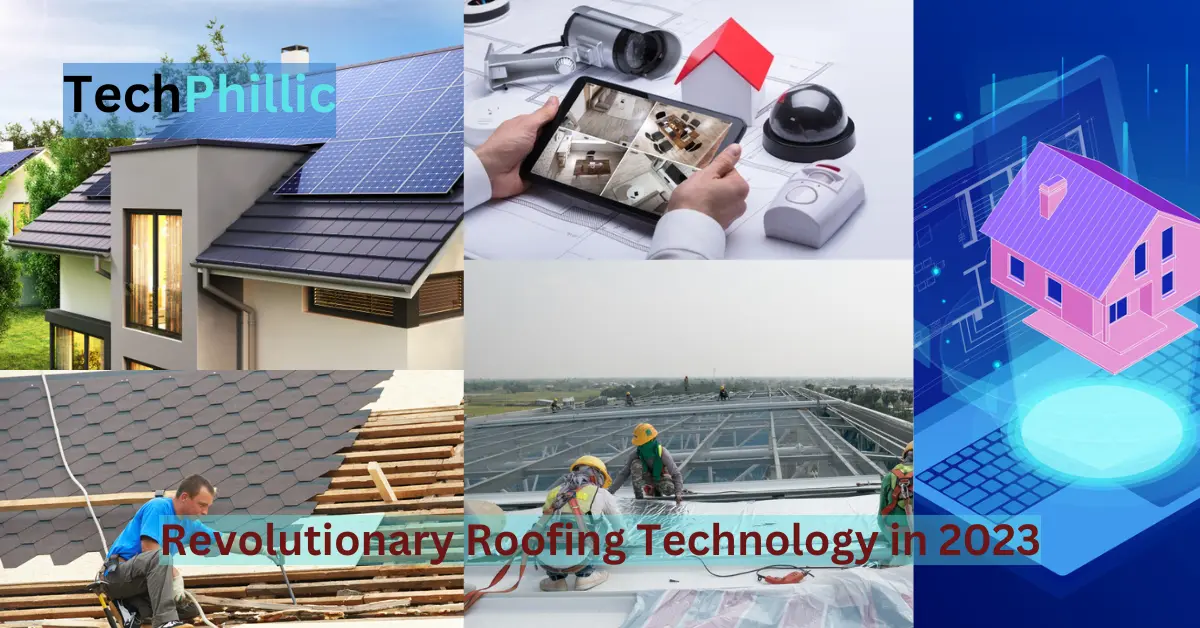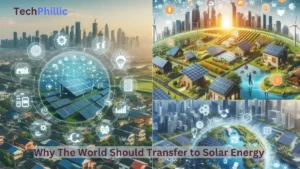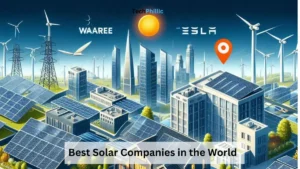Revolutionary Roofing Technology in 2023: In the ever-evolving world of construction, roofing technology stands out as a key player in shaping the future of sustainable living. The year 2023 brings forth a wave of groundbreaking advancements that promise to transform homes into eco-friendly, energy-efficient sanctuaries. As homeowners, builders, and roofing companies, it is essential to stay informed about these new developments and embrace the opportunities they present.
This article takes you on an enlightening journey through the latest innovations in roofing technology. From eco-friendly roofs to energy-producing systems and self-healing solutions, we explore how these advancements are revolutionizing the roofing industry. By understanding and adopting these transformative technologies, we can redefine our approach to sustainable living and make a positive impact on our environment.
Join us as we delve into the remarkable trends and advancements that are reshaping our roofs and redefining the way we live. Discover how these new roofing technologies not only enhance the functionality and longevity of our homes but also contribute to a more sustainable world for future generations.
Solar Roofing
Solar roofing solutions have emerged as a game-changer in the roofing industry, revolutionizing the way we think about roofs and energy consumption. With the increasing emphasis on sustainability and renewable energy, solar roofing has gained significant popularity in 2023 and is set to transform the way we power our homes.
Solar roofing combines traditional roofing materials with solar panels, allowing homeowners to harness the power of the sun and convert it into electricity. This integration of solar panels with roofing materials offers several advantages. First and foremost, solar roofing helps reduce carbon footprints and dependence on non-renewable energy sources. By generating clean and green electricity, homeowners can contribute to a more sustainable future.
The benefits of installing solar roofing are manifold. One of the primary advantages is the potential for significant energy cost savings. Solar roofing systems generate electricity from sunlight, which can offset traditional grid energy consumption. This means lower energy bills and long-term savings for homeowners.
Moreover, solar roofing allows homes to become energy self-sufficient. By producing their own electricity, homeowners can reduce reliance on the power grid and enjoy greater energy independence. This is particularly beneficial during power outages or in remote areas where access to electricity may be limited.
In terms of innovation, the integration of solar panels with roofing materials has seen remarkable advancements. The latest breakthroughs include more efficient and aesthetically pleasing solar panels that seamlessly blend with various roofing styles. These advancements have made solar roofing more accessible and appealing to a wider range of homeowners.
Additionally, solar roofing technology has become more versatile, allowing for integration with different roofing materials such as shingles, tiles, and metal panels. This versatility enables homeowners to choose a solar roofing solution that complements their architectural preferences and seamlessly integrates into the overall design of their homes.
Solar roofing systems have also become more efficient and productive, with advancements in solar panel technology, such as higher conversion rates and improved performance in low-light conditions. This means that solar roofing can generate enough electricity to power a home, even in regions with less sunlight.
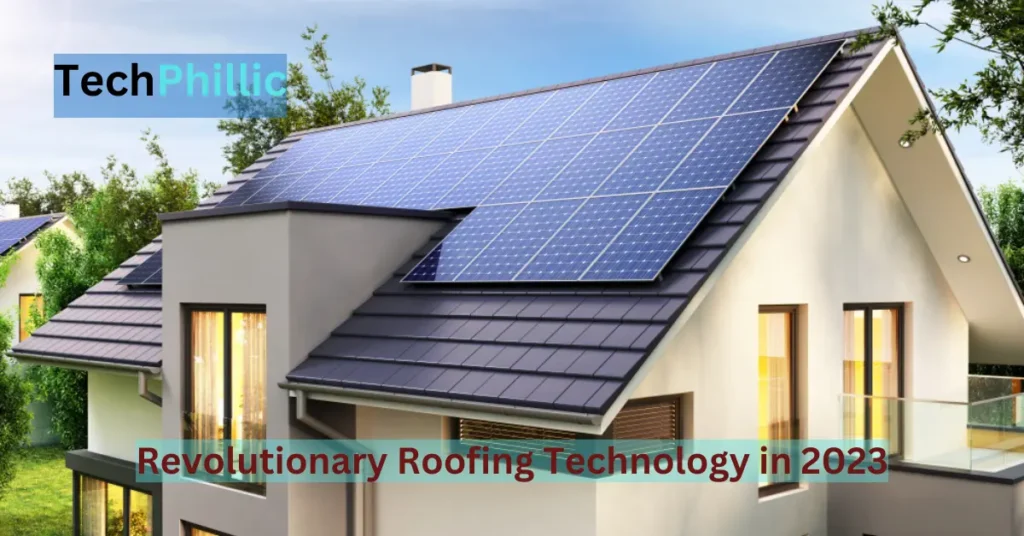
Cool Roofing Systems: Enhancing Energy Efficiency in Building Design
Cool roofing systems have emerged as a crucial element in energy-efficient building design. By reflecting more sunlight and absorbing less heat than traditional roofs, cool roofs offer numerous benefits in terms of reducing energy consumption and promoting sustainability. This article explores the concept of cool roofing, highlights its significance in energy-efficient building design, discusses the advantages of cool roofing systems, and presents new technologies and materials used in their implementation.
Definition and Importance of Cool Roofing:
Cool roofing refers to the use of roofing materials and techniques that have high solar reflectance and thermal emittance properties. These roofs are designed to minimize heat absorption, reducing the need for air conditioning and lowering energy consumption within buildings. The importance of cool roofing lies in its ability to mitigate the urban heat island effect, improve indoor comfort, and contribute to overall energy efficiency in buildings.
Benefits of Cool Roofing Systems:
- Energy Savings: Cool roofing systems can significantly reduce the energy consumption of buildings by decreasing the need for air conditioning. By reflecting sunlight, these roofs help maintain cooler indoor temperatures, leading to lower cooling costs and increased energy savings.
- Environmental Impact: Cool roofs help reduce the urban heat island effect, which occurs when built-up areas experience higher temperatures compared to surrounding rural areas. By lowering the overall temperature in urban environments, cool roofs contribute to a more sustainable and eco-friendly living environment.
- Extended Roof Lifespan: Cool roofing materials are designed to withstand the damaging effects of UV radiation and excessive heat, resulting in extended roof lifespans. The reduced thermal stress on cool roofs translates into decreased maintenance requirements and potential cost savings for building owners.
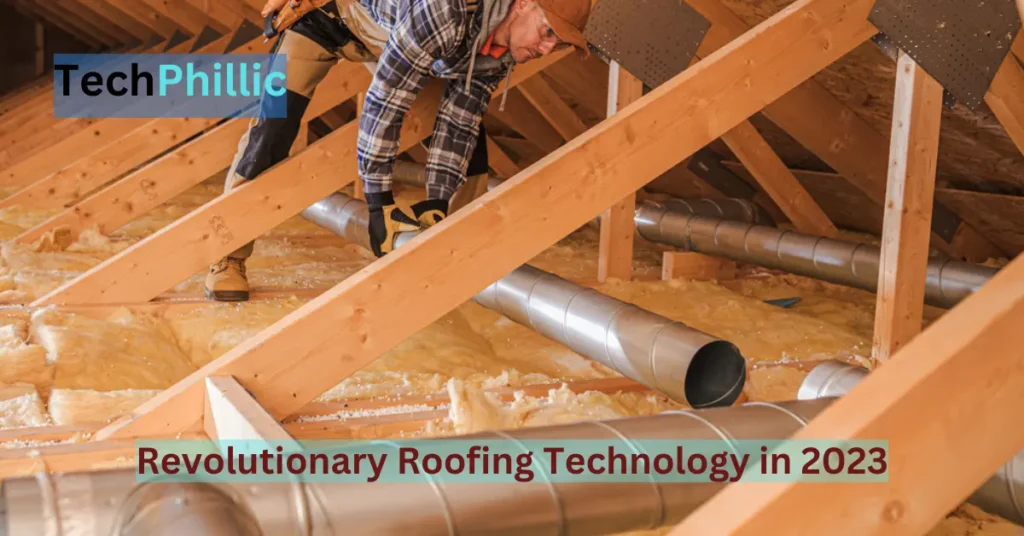
New Technologies and Materials in Cool Roofing:
Advancements in cool roofing technology have led to the development of innovative materials and techniques that enhance energy efficiency. Some notable examples include:
- Reflective Roof Coatings: These coatings are applied to existing roofs to improve solar reflectance and reduce heat absorption. They can be easily installed on various roofing surfaces and offer an affordable option for transforming traditional roofs into cool roofs.
- Cool Roof Shingles and Tiles: Manufacturers have introduced roofing shingles and tiles with highly reflective surfaces, reducing heat absorption and enhancing energy efficiency. These products come in a variety of styles and colors, providing aesthetic options while maintaining cool roof properties.
- Green Roofs: Combining vegetation with traditional roofing materials, green roofs offer a natural cooling effect by absorbing heat and promoting evaporation. These roofs not only provide excellent insulation but also contribute to improved air quality and stormwater management.
Smart Roofing Sensors and Monitoring: Enhancing Building Maintenance
Discover the future of building maintenance with smart roofing technology. By integrating advanced sensors and real-time monitoring, smart roofing systems revolutionize the way roofs are maintained. In this article, we will explore the concept of smart roofing, the types of sensors used, the benefits of real-time monitoring, and the advancements in sensor technology and data analytics.
Smart roofing systems utilize cutting-edge technology to enhance building maintenance practices. By incorporating sensors and monitoring capabilities, these systems provide valuable insights into roof health, enabling proactive maintenance and preventing potential issues.
Types of Sensors Used in Smart Roofing Systems
- Moisture Sensors: These sensors detect moisture levels in the roof, helping identify leaks or areas prone to water damage. Early detection allows for timely repairs, preventing costly water-related issues.
- Temperature Sensors: Temperature sensors monitor the roof’s surface temperature, enabling the detection of heat anomalies that may indicate insulation problems or heat loss. This data helps optimize energy efficiency and reduce heating or cooling costs.
- Wind Sensors: Wind sensors measure wind speed and direction, providing valuable information for assessing the roof’s structural integrity and identifying potential damage risks during severe weather events.
- Vibration Sensors: Vibration sensors detect vibrations or movements in the roof, indicating structural instability or the presence of pests. Early detection helps prevent further damage and ensures the safety of the building and its occupants.
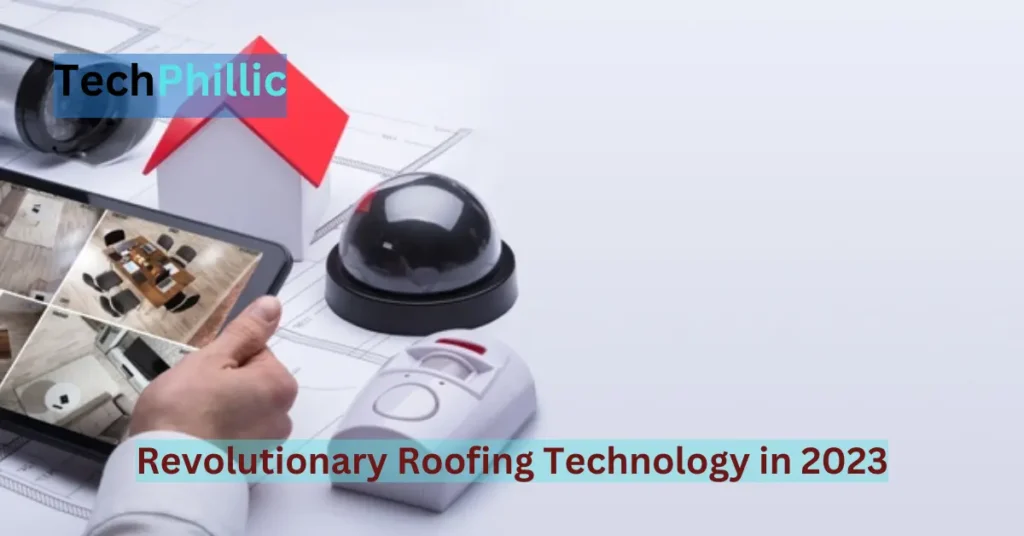
Benefits of Real-Time Monitoring and Predictive Maintenance
- Early Issue Detection: Real-time monitoring allows for the detection of problems as they arise, enabling prompt action to prevent further damage and costly repairs.
- Predictive Maintenance: By analyzing sensor data over time, smart roofing systems can predict maintenance needs, allowing for proactive repairs or replacements before significant issues occur. This approach extends the lifespan of the roof and reduces overall maintenance costs.
- Energy Efficiency Optimization: Through continuous monitoring, smart roofing systems can identify energy inefficiencies, such as heat loss or excessive heat absorption. This information helps optimize insulation and ventilation, reducing energy consumption and costs.
- Improved Safety: Smart roofing sensors provide valuable information about the roof’s structural integrity, allowing for timely repairs and ensuring the safety of building occupants.
Advancements in Sensor Technology and Data Analytics for Roofing
The field of smart roofing is constantly evolving, with advancements in sensor technology and data analytics further enhancing the capabilities of these systems. Improved sensor accuracy, wireless connectivity, and cloud-based data analytics enable real-time data processing and seamless integration with building management systems. This integration streamlines maintenance processes, increases efficiency, and enhances the overall performance of the roofing system.
Importance of Sustainable Roofing Materials in 2023: Eco-Friendly Innovations for Energy Efficiency and Durability
In the ever-evolving world of construction, sustainable roofing materials have emerged as a crucial element in promoting environmental conservation and energy efficiency. As we delve into 2023, the roofing industry is witnessing the rise of innovative and eco-friendly materials that offer significant benefits in terms of durability, energy efficiency, and their overall impact on the environment.
1. The Significance of Sustainable Roofing Materials:
Sustainable roofing materials play a vital role in addressing the environmental challenges we face today. By utilizing these materials, we can actively contribute to reducing carbon footprints, conserving energy, and protecting natural resources. Here are some key reasons why sustainable roofing materials are of utmost importance:
Environmental Conservation:
Choosing sustainable roofing materials helps mitigate the harmful impact on the environment. Traditional roofing materials often contribute to landfill waste and require excessive energy consumption during their manufacturing process. On the other hand, sustainable materials offer a greener alternative by utilizing recycled content, renewable resources, or environmentally friendly manufacturing processes.
Energy Efficiency:
Energy efficiency is a critical aspect of sustainable roofing materials. By incorporating energy-saving features, such as reflective surfaces or integrated solar technologies, these materials help reduce the overall energy consumption of a building. This, in turn, leads to lower energy bills and a lighter environmental footprint.
Durability and Longevity:
Sustainable roofing materials are designed to be durable and long-lasting. They often outperform traditional options in terms of strength, resistance to weather elements, and resistance to damage caused by UV radiation. Investing in sustainable roofing materials can extend the lifespan of a roof, reducing the need for frequent repairs or replacements and minimizing waste.
2. Innovative and Eco-Friendly Roofing Materials in 2023:
The roofing industry has witnessed remarkable advancements in sustainable materials. Here are some innovative options available in 2023:
Recycled Shingles:
Recycled shingles, made from reclaimed materials such as rubber or plastic, offer a sustainable alternative to traditional asphalt shingles. These shingles not only prevent waste from reaching landfills but also provide excellent durability and weather resistance.
Green Roofs:
Green roofs, also known as living roofs, are gaining popularity as an eco-friendly solution. These roofs incorporate vegetation, soil, and drainage systems, providing numerous benefits like improved air quality, enhanced insulation, and reduced urban heat island effect. Green roofs also assist in stormwater management by absorbing rainwater and reducing runoff.
Solar Shingles and Panels:
Integrating solar technology into roofing materials is revolutionizing the industry. Solar shingles and panels allow buildings to generate clean, renewable energy while maintaining an aesthetically pleasing roof. These energy-producing roofs not only reduce reliance on the grid but also offer potential cost savings through lower energy bills.
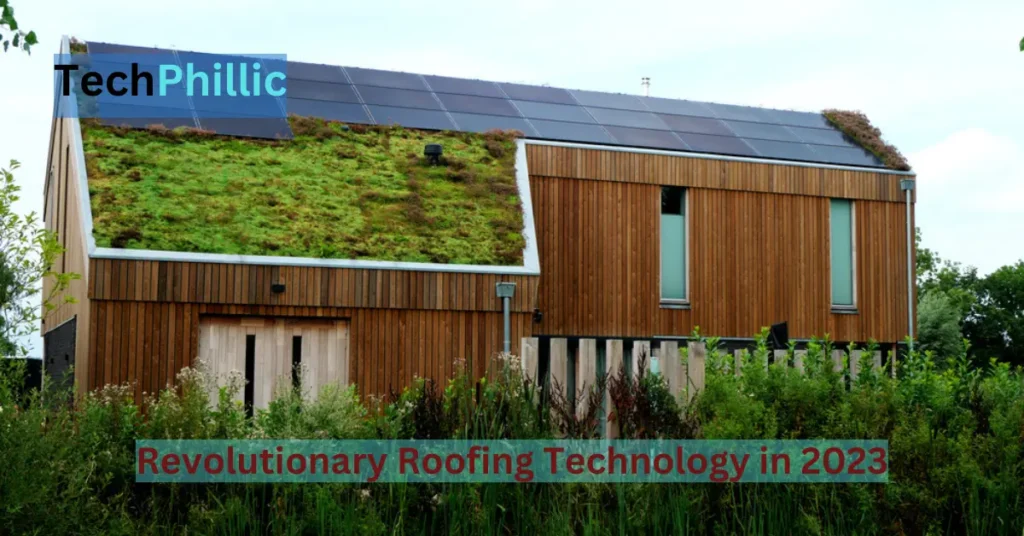
3. Benefits of Sustainable Roofing Materials:
Choosing sustainable roofing materials brings several advantages, including:
Energy Savings:
By utilizing reflective surfaces or solar technologies, sustainable materials contribute to lower energy consumption for heating, cooling, and lighting. This translates to reduced energy bills and greater long-term cost savings for homeowners and businesses.
Reduced Environmental Impact:
Sustainable roofing materials minimize the carbon footprint associated with construction and operation. They utilize recycled or renewable resources and often have a lower embodied energy, resulting in reduced greenhouse gas emissions.
Enhanced Durability:
Sustainable materials are engineered to withstand harsh weather conditions, including UV radiation, temperature fluctuations, and heavy rainfall. Their enhanced durability ensures a longer lifespan, reducing maintenance costs and waste generation.
Drone Technology for Roof Inspections: Advancements and Benefits in New Roofing Technology
In the ever-evolving roofing industry, the use of drone technology has revolutionized roof inspections and maintenance practices. Drones offer significant advantages in terms of visual assessments, data collection, and overall efficiency. Here we will explore the benefits of using drones for roof inspections, discuss the latest advancements in drone technology for roofing applications, and highlight the role of drones in the new roofing technology landscape.
Advantages of Using Drones for Roof Inspections:
Enhanced Visual Assessments:
Drones provide a unique aerial perspective, allowing inspectors to capture high-resolution images and videos of roofs from various angles. This comprehensive view helps identify potential issues such as damaged shingles, cracks, or structural weaknesses that may not be easily visible from the ground. Drones enable inspectors to detect problems early on, leading to timely repairs and preventing more extensive damage.
Efficient Data Collection:
Traditionally, roof inspections involved manual measurements and time-consuming processes. Drones equipped with specialized cameras and sensors can quickly collect data, including roof dimensions, surface conditions, and thermal imaging. This automated data collection streamlines the inspection process, saving time and reducing the chances of errors.
Improved Safety:
Roof inspections often pose risks to human inspectors, especially in challenging or dangerous environments. Drones eliminate the need for inspectors to physically climb onto roofs, reducing the risk of falls or injuries. With drones, inspections can be conducted remotely, ensuring the safety of personnel while still obtaining accurate and detailed information.
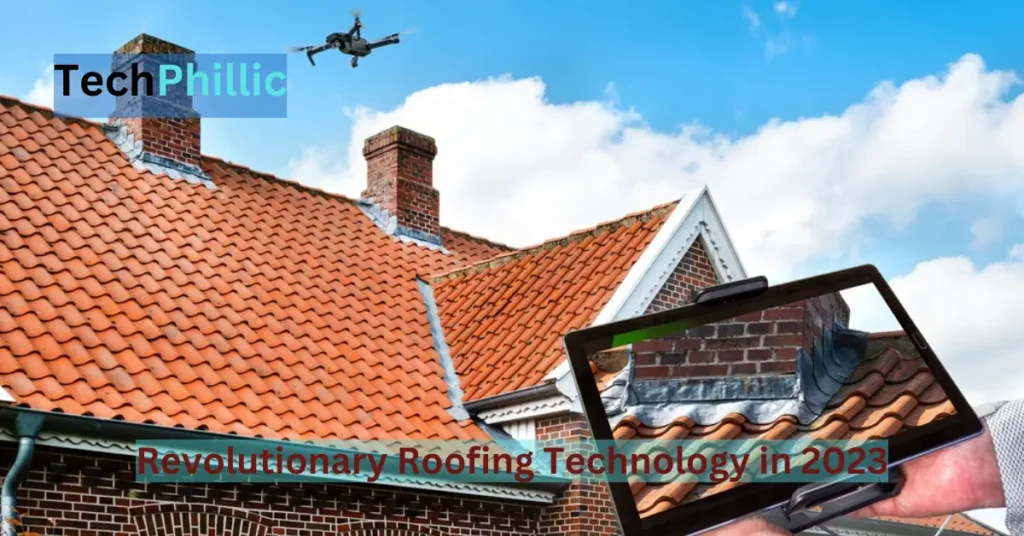
Latest Advancements in Drone Technology for Roofing Applications:
High-Resolution Imaging:
Modern drones are equipped with high-resolution cameras capable of capturing detailed images and videos. This advanced imaging technology allows inspectors to zoom in on specific areas of the roof, providing a closer examination of potential issues. The enhanced image quality enables better analysis and decision-making for maintenance and repair processes.
Thermal Imaging:
Some drones come with thermal imaging capabilities, which can detect temperature differences across a roof’s surface. Thermal imaging helps identify hidden moisture, insulation gaps, or energy leaks. This valuable data assists in diagnosing insulation issues and improving energy efficiency in buildings.
Data Analysis and Reporting:
Drone technology is complemented by powerful data analysis software. These programs can process the data collected by drones, generating comprehensive reports and actionable insights. Roofing professionals can access detailed measurements, 3D models, and thermal maps, facilitating accurate assessments and effective communication with clients.
Regulations and Limitations for Drone Use in Roof Inspections:
It is important to note that the use of drones for roof inspections is subject to regulations and limitations. Depending on the country or region, there may be specific guidelines regarding drone operations, including flight restrictions, privacy considerations, and licensing requirements. It is essential to comply with these regulations to ensure safe and lawful drone usage.
ALSO READ:How To Tell If Someone Is Accessing Your iPhone Remotely Without Your Permission
Embracing the Future: 3D Printing in Roof Construction
In the ever-evolving construction industry, innovative technologies continue to reshape traditional practices. One such groundbreaking advancement is the integration of 3D printing technology in roof construction. This explores the concept of 3D printing in roofing, highlighting its advantages, the latest developments, and real-world case studies that demonstrate its potential.
Advantages of 3D Printing Technology for Roof Construction:
- Enhanced Design Flexibility: 3D printing allows for intricate and customized designs that were once challenging to achieve using conventional methods. Architects and homeowners can now bring their creative visions to life with greater precision and versatility.
- Speed and Efficiency: 3D printing enables rapid construction of roof components, reducing the overall construction time. By eliminating the need for manual labor in the manufacturing process, 3D printing streamlines production and accelerates project completion.
- Cost Savings: With 3D printing, roof construction becomes more cost-effective. By minimizing material waste and optimizing the manufacturing process, expenses related to labor, transportation, and material procurement are significantly reduced.
- Sustainability and Waste Reduction: The eco-friendly nature of 3D printing aligns with the growing demand for sustainable construction practices. By using additive manufacturing techniques, 3D printing reduces material waste and energy consumption, making it a greener alternative for roof construction.
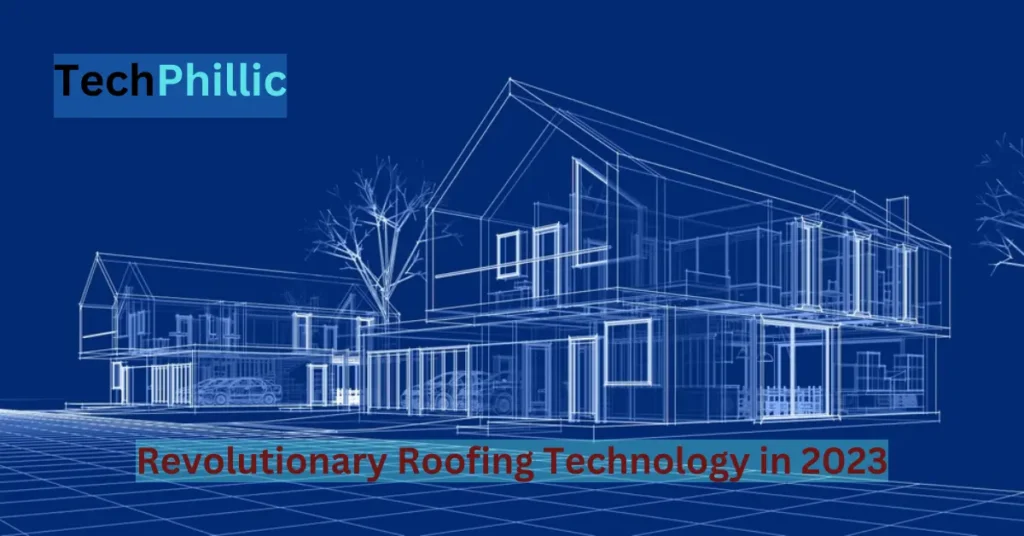
Latest Developments and Case Studies:
- Icon’s Vulcan II: Icon, a construction technology company, has developed the Vulcan II 3D printer specifically for building houses, including roofs. This cutting-edge printer can construct entire roof structures using a proprietary mix of sustainable materials, ensuring durability and energy efficiency.
- Affordable Housing in Mexico: New Story, a nonprofit organization, partnered with ICON to build affordable 3D-printed homes in Mexico. These homes feature 3D-printed roofs that are not only cost-effective but also resistant to extreme weather conditions.
- NASA’s 3D-Printed Habitats: In collaboration with multiple partners, NASA is exploring the use of 3D printing technology to construct habitats on other planets. This research and development project showcases the immense potential of 3D printing for advanced and complex roof structures.
Challenges and Limitations:
While 3D printing offers significant advantages, there are a few challenges to consider:
- Regulatory and Code Compliance: Incorporating 3D-printed roofs into existing building codes and regulations may require adjustments and approvals. Ensuring compliance with safety standards and regulations is crucial before widespread adoption.
- Skilled Workforce: The successful implementation of 3D printing in roofing requires a skilled workforce capable of operating and maintaining 3D printers. Training programs and educational initiatives are essential to bridge this skills gap.
Augmented Reality in Roofing: Revolutionizing the Industry
Augmented Reality (AR) has emerged as a game-changer in the roofing industry, transforming roof design and installation processes. This technology offers numerous applications that enhance visualization, improve accuracy, and streamline the overall roofing experience. Discover how AR is reshaping the roofing industry and explore its benefits and practical applications.
Section 1: The Impact of Augmented Reality in Roofing
Augmented Reality (AR) is revolutionizing the roofing industry, bringing innovation and efficiency to roof design and installation. By overlaying digital information onto the real world, AR enables roofers and homeowners to visualize and interact with roofing elements in real-time. This immersive technology offers unparalleled accuracy, enhances decision-making, and reduces errors, ultimately transforming the way roofs are designed, installed, and maintained.
Section 2: Applications of AR in Roof Design
AR technology empowers roofing professionals by providing advanced design capabilities. Through AR applications, roofers can virtually test different roofing materials, styles, and colors on a customer’s property. This allows homeowners to visualize how their new roof will look before making a final decision, ensuring satisfaction and avoiding costly mistakes. AR also enables precise measurements and calculations, ensuring accurate material estimates and reducing wastage.

Section 3: Visualization and Communication
AR tools enable visualizing a completed roof before construction even begins. With AR glasses or mobile devices, roofers can overlay 3D models of proposed roofs onto the existing structure. This visual representation helps clients understand the final outcome, facilitating effective communication and avoiding misunderstandings. Roofing professionals can demonstrate various design options, discuss potential modifications, and provide clients with a clear vision of the finished project.
Section 4: Streamlining Installation Processes
AR simplifies the installation process by providing step-by-step guidance to roofers. By using AR devices, roofers can access real-time digital overlays of the roof structure, indicating the precise locations for installing materials, flashing, and other components. This technology reduces errors, enhances efficiency, and accelerates the installation timeline. AR can also provide access to digital documentation and installation instructions, ensuring compliance with manufacturer guidelines and best practices.
The Impact of Artificial Intelligence on Optimizing Roofing Systems
Artificial intelligence (AI) is revolutionizing various industries, and the roofing sector is no exception. In this article, we will explore the role of AI in optimizing roofing systems, focusing on how AI algorithms and machine learning contribute to roof performance and maintenance. We will also present case studies and examples of AI-powered roofing technologies. Discover how the integration of AI and new roofing technology is reshaping the industry for the better.
1. Enhancing Roof Performance:
AI-powered technologies have the potential to significantly improve roof performance by analyzing various data points and making real-time adjustments. Here’s how AI contributes to this aspect:
- Predictive Maintenance: AI algorithms can analyze data from sensors and weather forecasts to predict maintenance needs accurately. By identifying potential issues in advance, proactive measures can be taken to prevent costly damages and ensure optimal roof performance.
- Weather Monitoring: AI-based systems can continuously monitor weather conditions and adapt roofing systems accordingly. This helps roofs withstand extreme weather events, such as storms or heavy rainfall, minimizing potential damage and improving longevity.
- Energy Optimization: AI algorithms can optimize energy consumption by analyzing data from smart meters and weather patterns. This enables roofs to adapt their energy usage based on real-time conditions, resulting in reduced energy bills and increased sustainability.
2. Streamlining Roof Maintenance:
AI technology simplifies roof maintenance processes by automating repetitive tasks and enabling efficient resource allocation. Here are some key points:
- Drone Inspections: Drones equipped with AI-powered cameras can quickly and accurately inspect roofs, identifying potential issues such as cracks, leaks, or structural damage. This technology saves time, reduces costs, and enhances safety for maintenance personnel.
- Data Analysis: AI algorithms can analyze vast amounts of roof-related data, including images, weather patterns, and historical records. By leveraging machine learning, these systems can identify patterns and provide actionable insights for efficient maintenance planning and decision-making.
- Remote Monitoring: AI-enabled sensors can monitor roof conditions in real-time, providing continuous feedback on factors like temperature, humidity, and structural integrity. This data helps detect anomalies promptly, allowing for proactive maintenance and reducing the risk of unexpected failures.
3. Case Studies and Examples:
- AI-Powered Roof Coatings: Some companies are developing AI-based coatings that adjust their properties based on environmental conditions. These coatings can reflect sunlight or absorb heat as needed, optimizing energy efficiency and reducing cooling costs.
- Intelligent Roofing Management Systems: AI-powered platforms are being used to manage large-scale roofing projects. These systems streamline communication, facilitate resource allocation, and enhance collaboration between various stakeholders, resulting in improved project efficiency and timely completion.
Conclusion
In conclusion, the year 2023 has brought forth a remarkable transformation in the roofing industry through the introduction of new roofing technology.
This rapid evolution has not only reshaped our roofs but has also redefined sustainable living. The emerging trends in new roofing technology offer exciting possibilities for homeowners and roofing companies alike.
The focus on eco-friendly roofs has spearheaded a revolution in the industry. Environmentally-friendly options such as recycled shingles and green roofs have not only reduced carbon footprints but also provided substantial energy savings.
Energy-producing roofs, integrating solar panels and solar shingles, have turned passive homes into active energy producers, resulting in significant reductions in energy bills over time.
Cool roofs, designed to reflect sunlight and absorb less heat, have gained traction, leading to substantial cooling cost reductions in warmer climates. Moreover, the introduction of self-healing roofs has significantly reduced maintenance costs and extended the lifespan of roofs.
The impact of these technological advancements goes beyond energy efficiency and sustainability. There have been changes in installation methods and requirements for roofers, necessitating advanced skills and knowledge.
Despite challenges such as higher initial costs and skilled installation requirements, adopting new residential roofing technology offers compelling long-term benefits, including lower energy bills, minimal maintenance, and extended lifespan.
Looking ahead, experts predict the rise of smart roofs capable of integrating with home automation systems and optimizing energy use based on weather conditions. Embracing these advancements in roofing technology is crucial for both homeowners and roofing companies to stay ahead in the industry and explore new opportunities.

